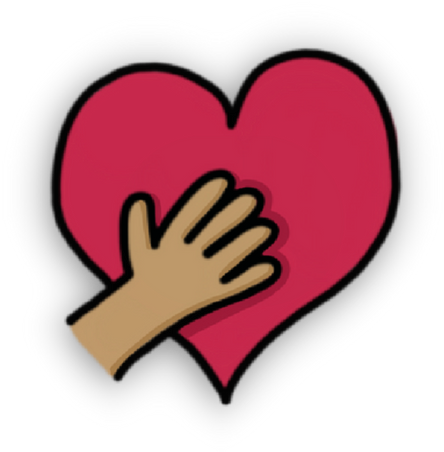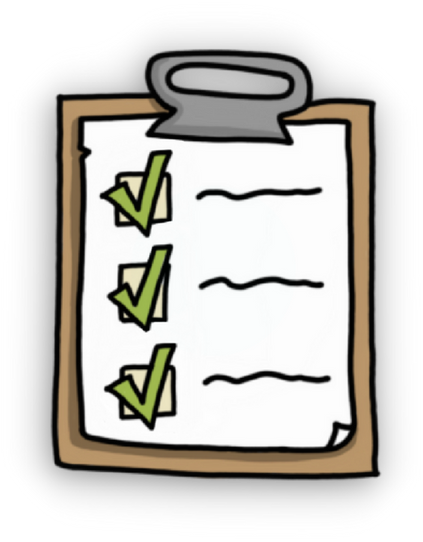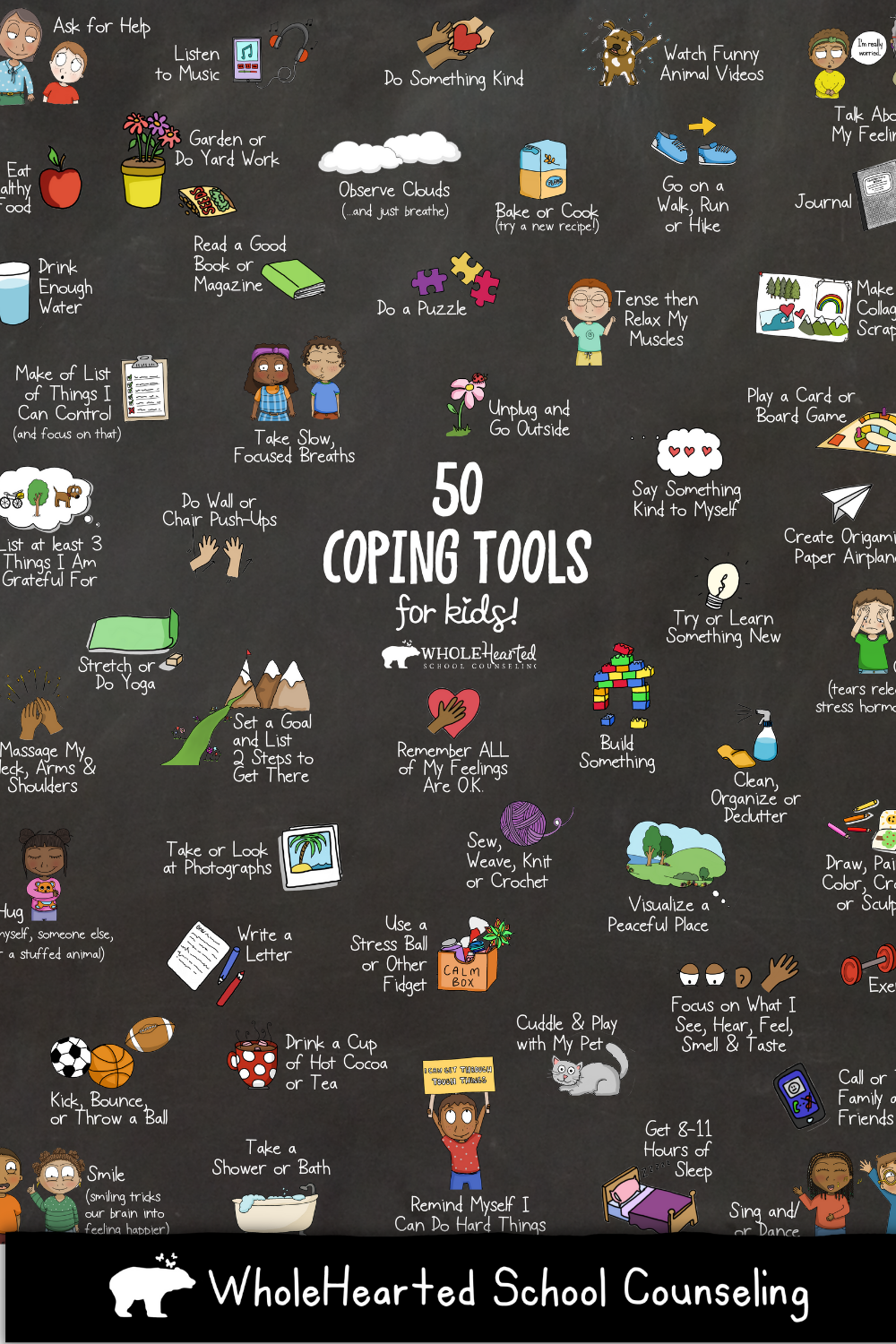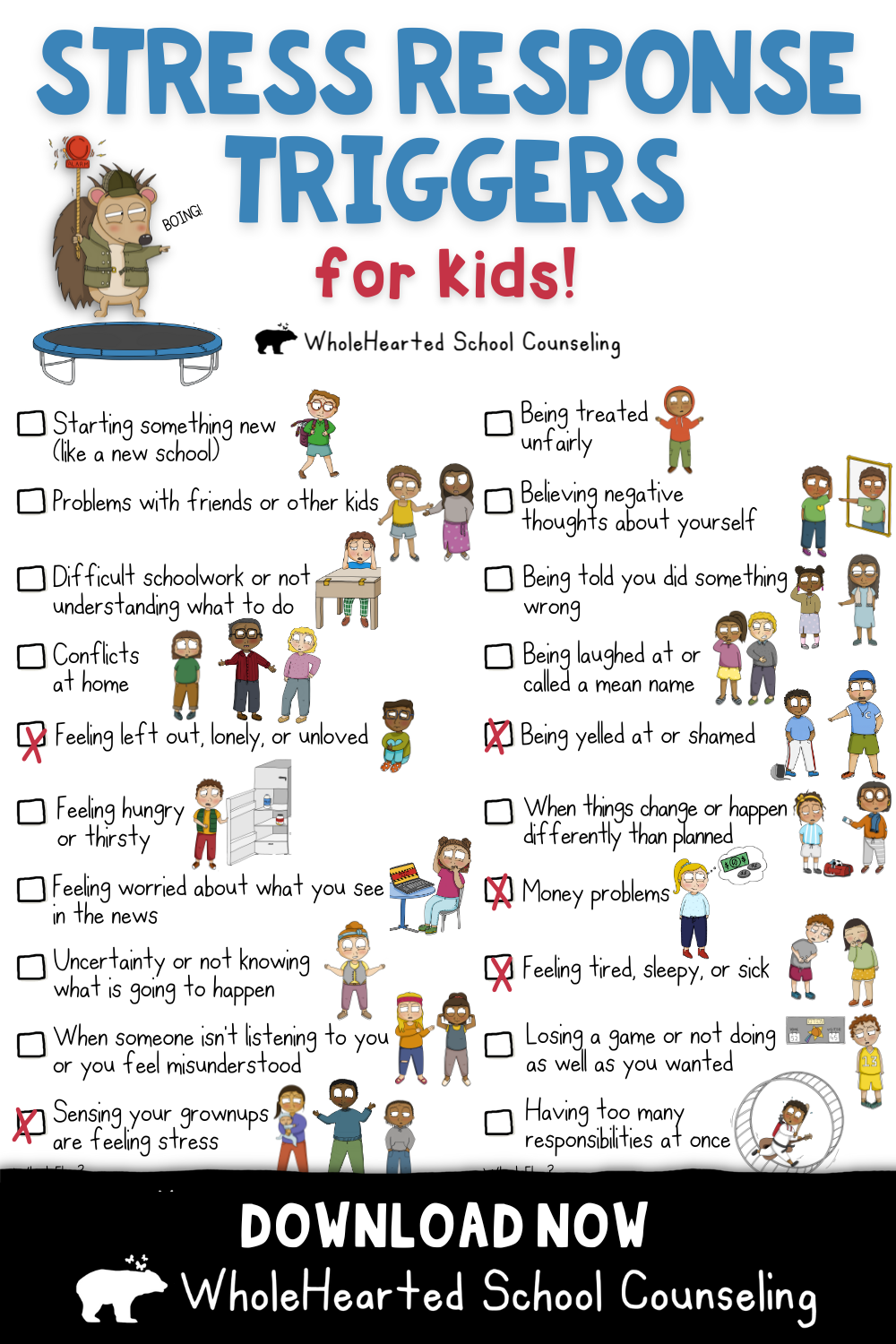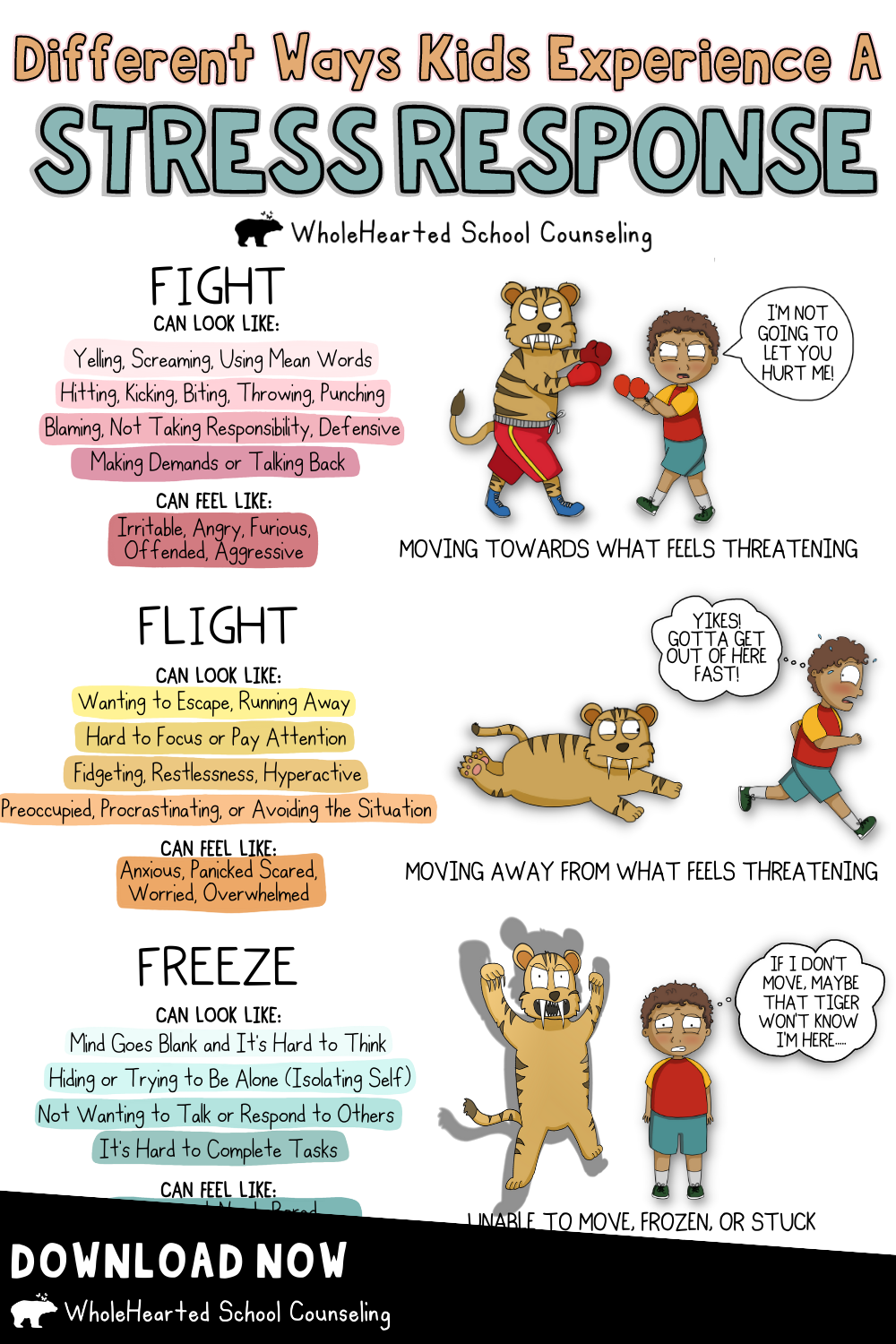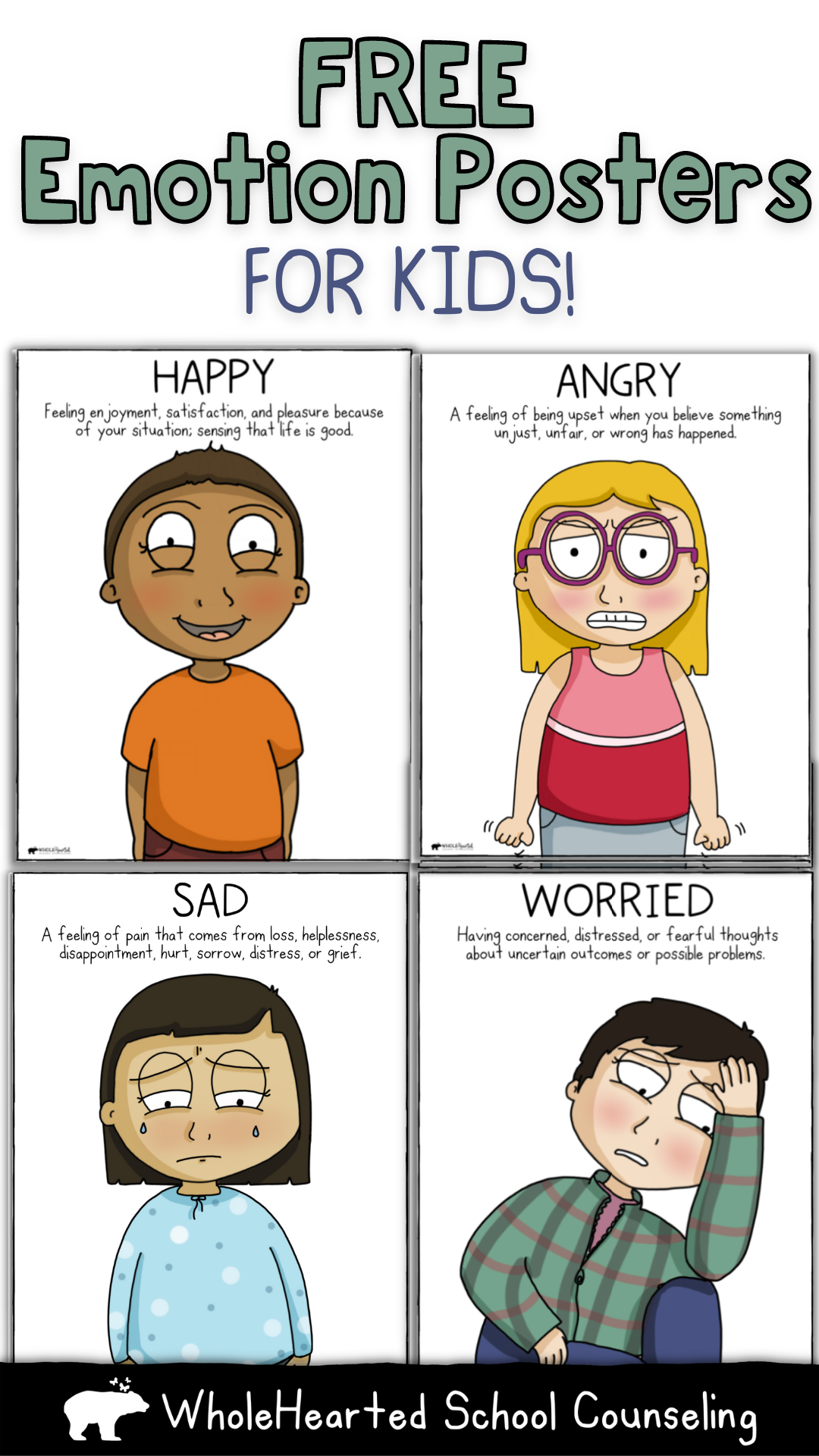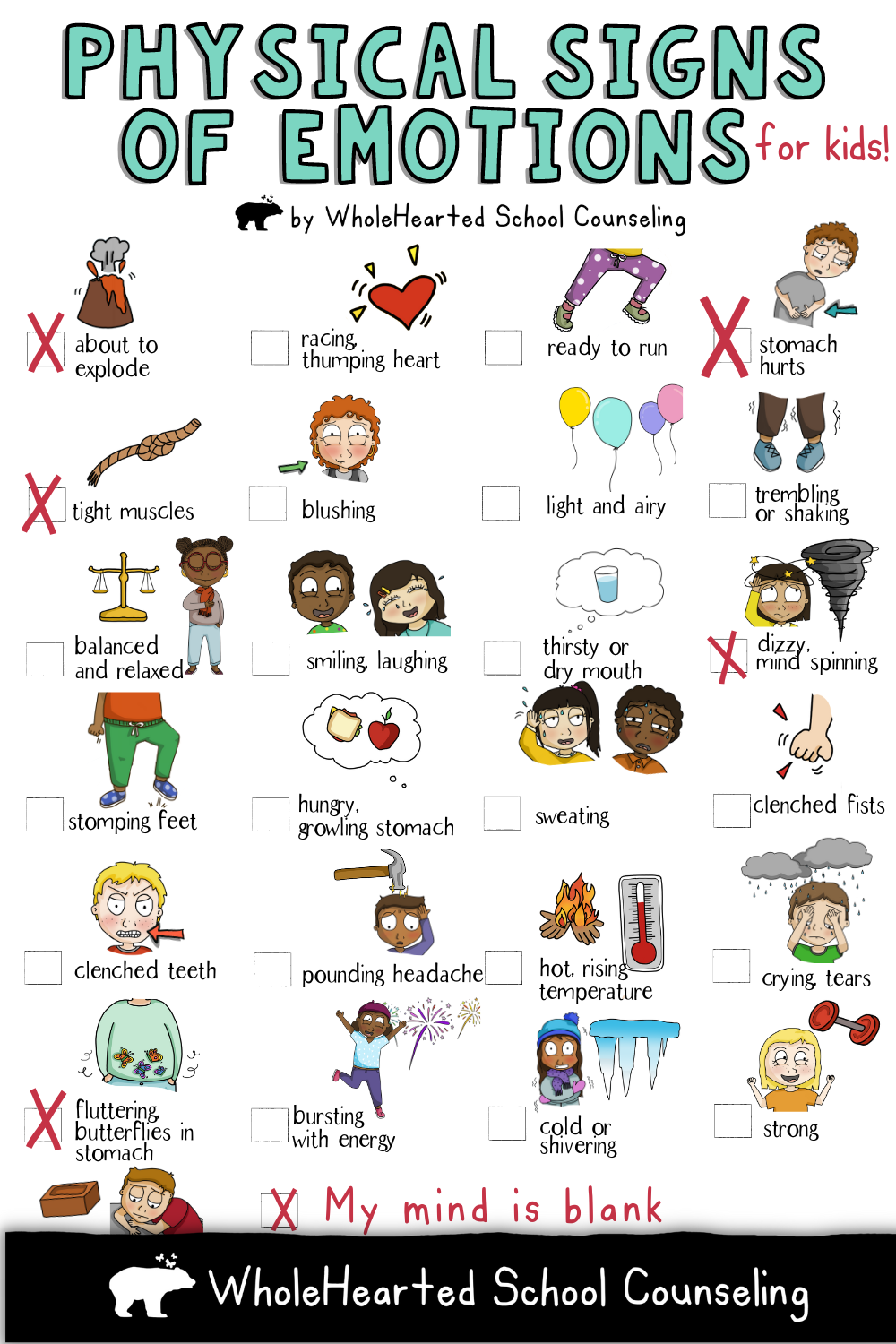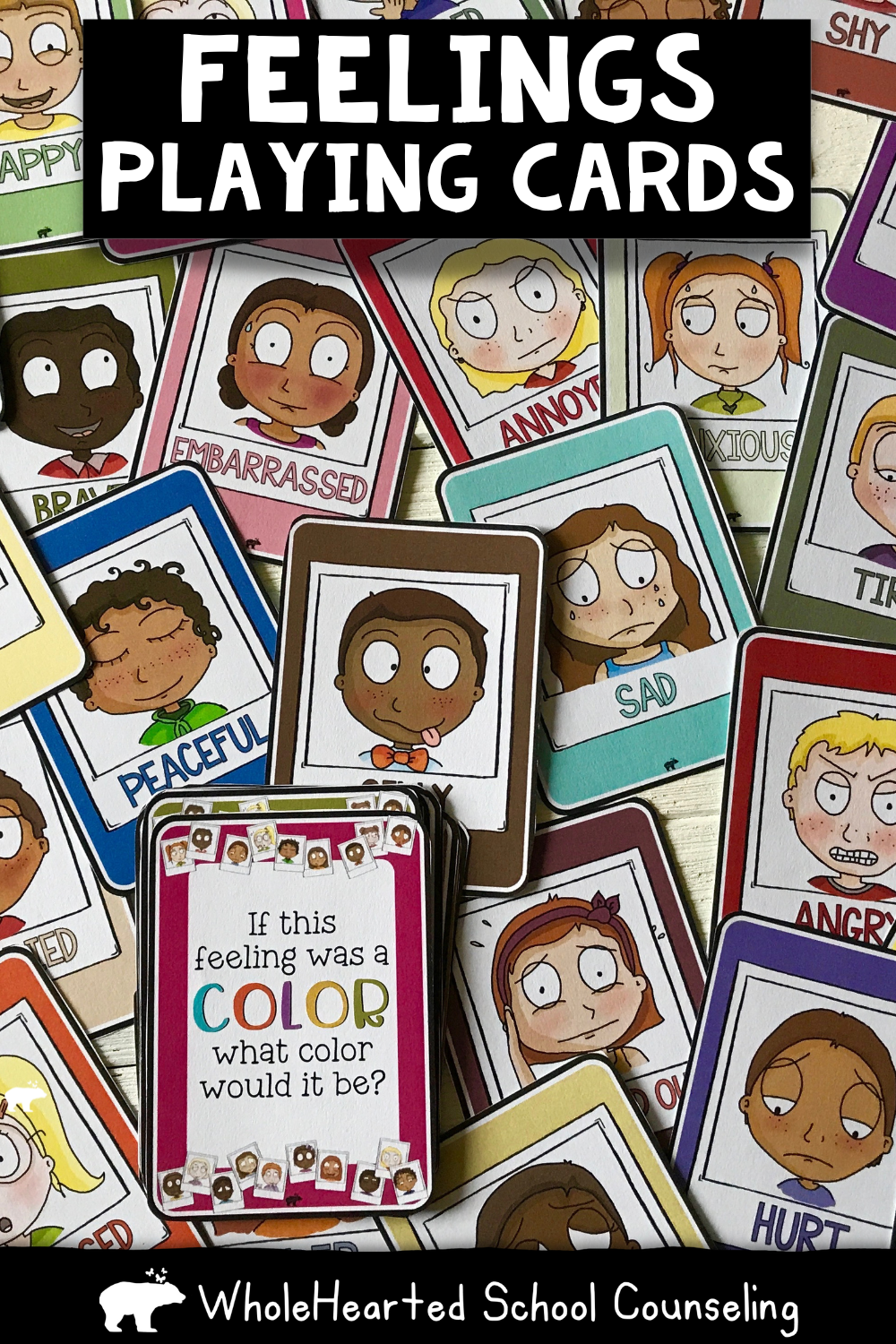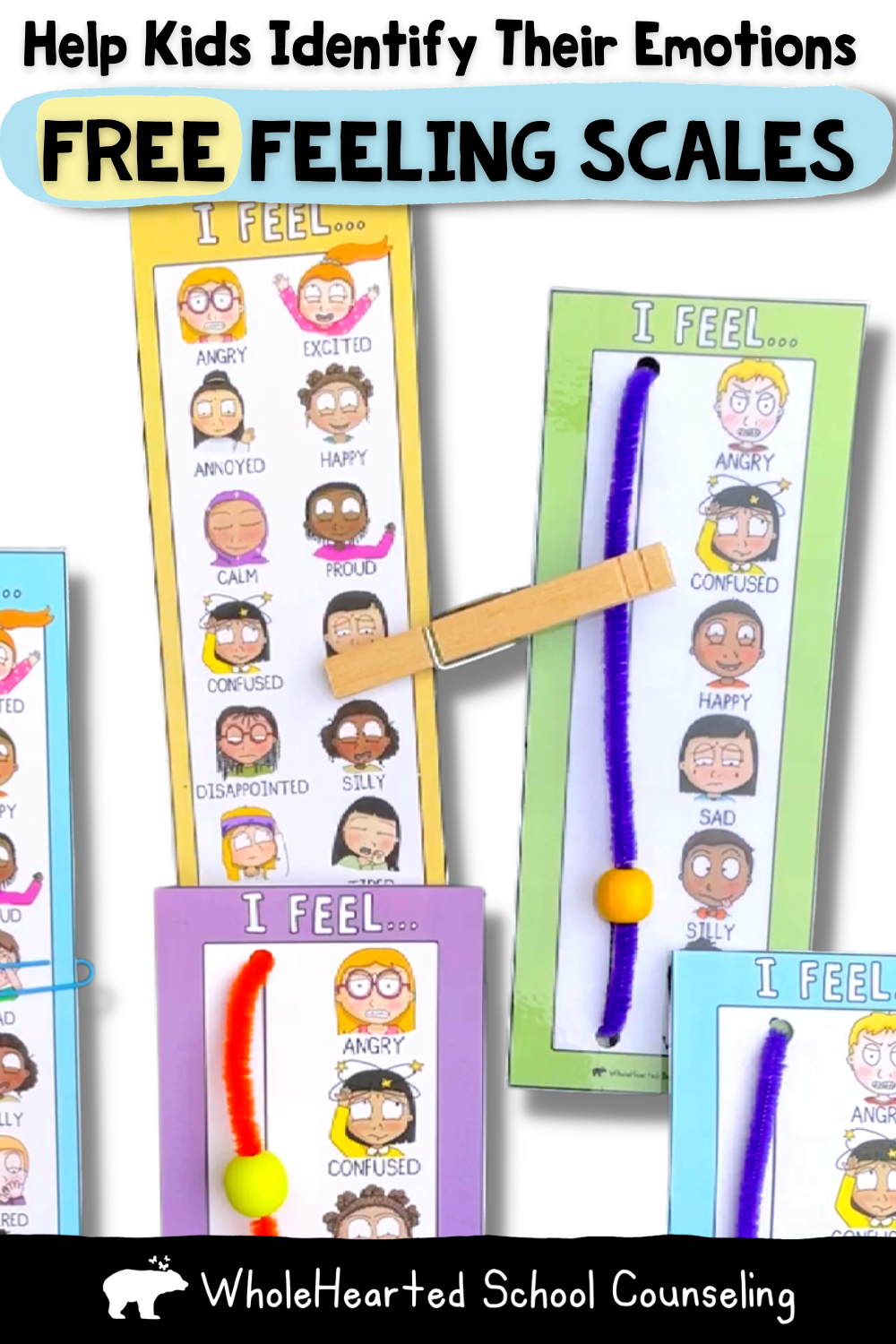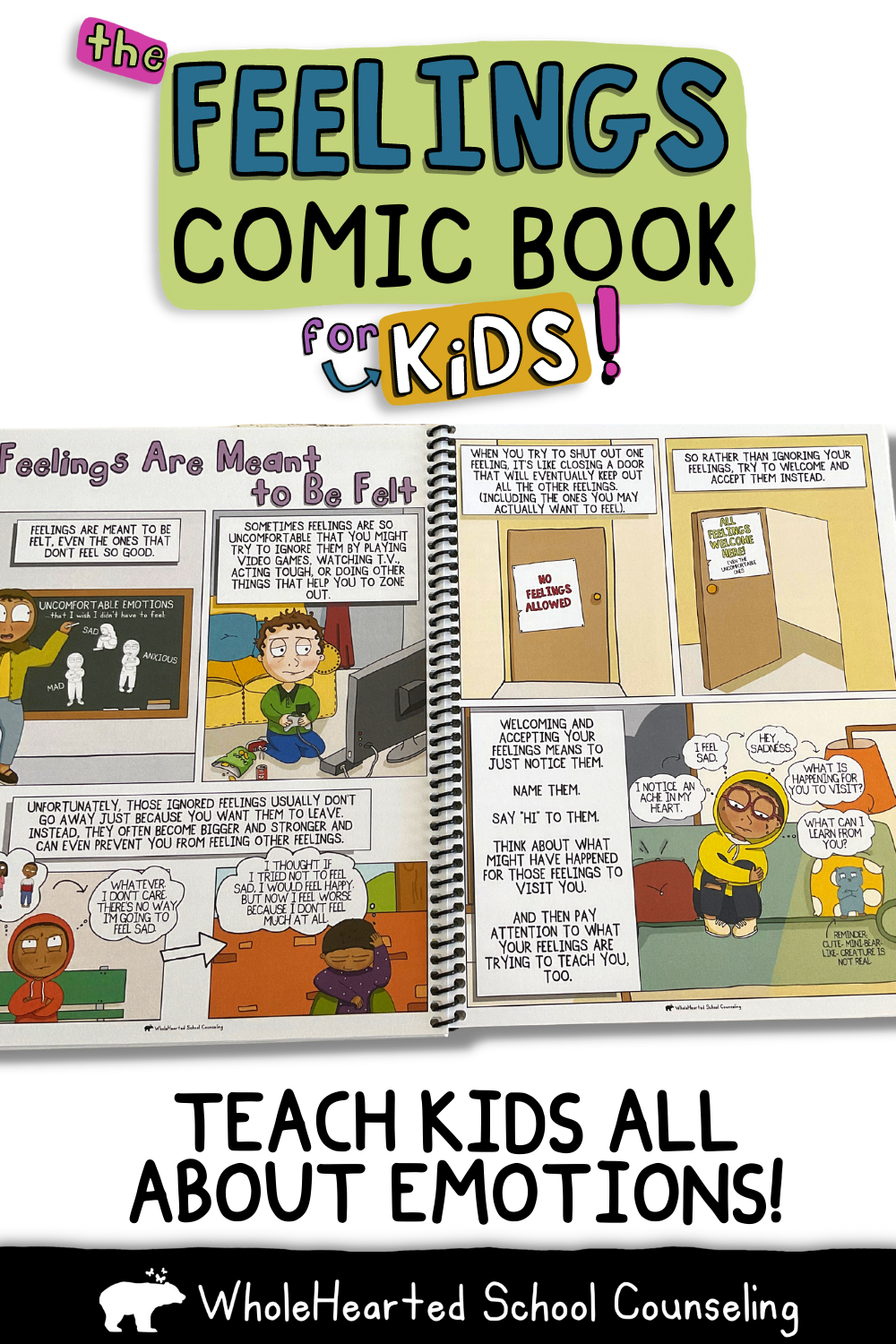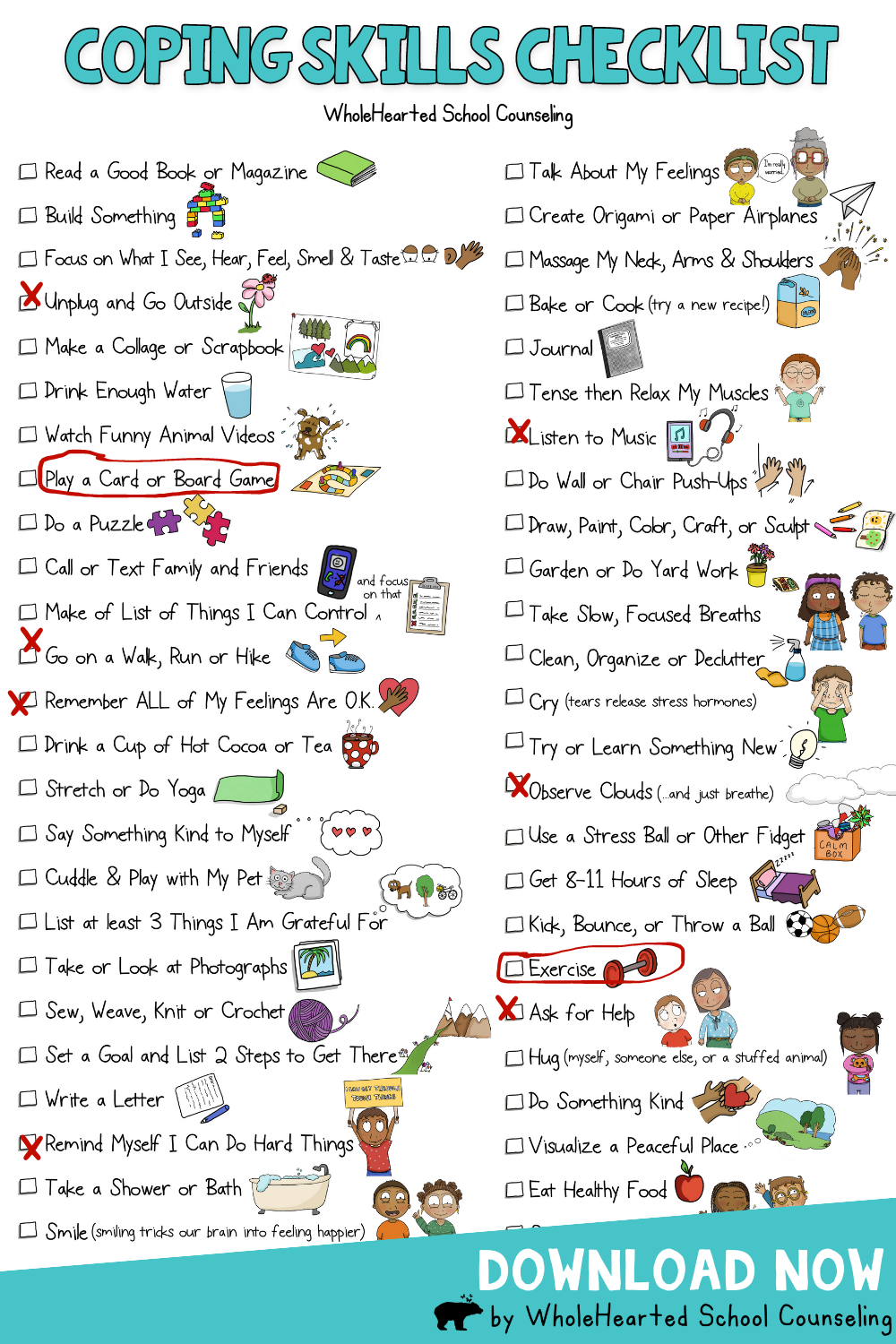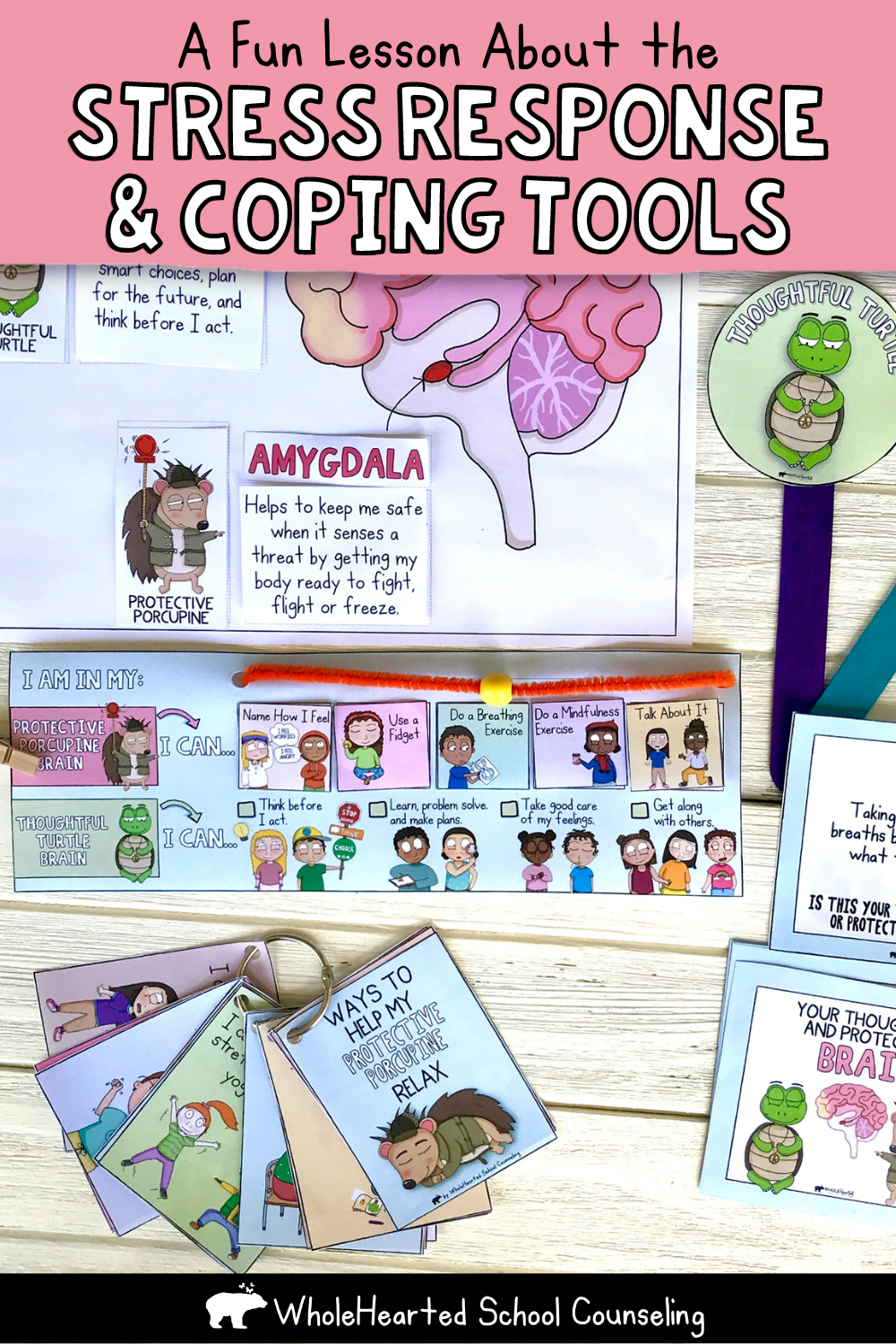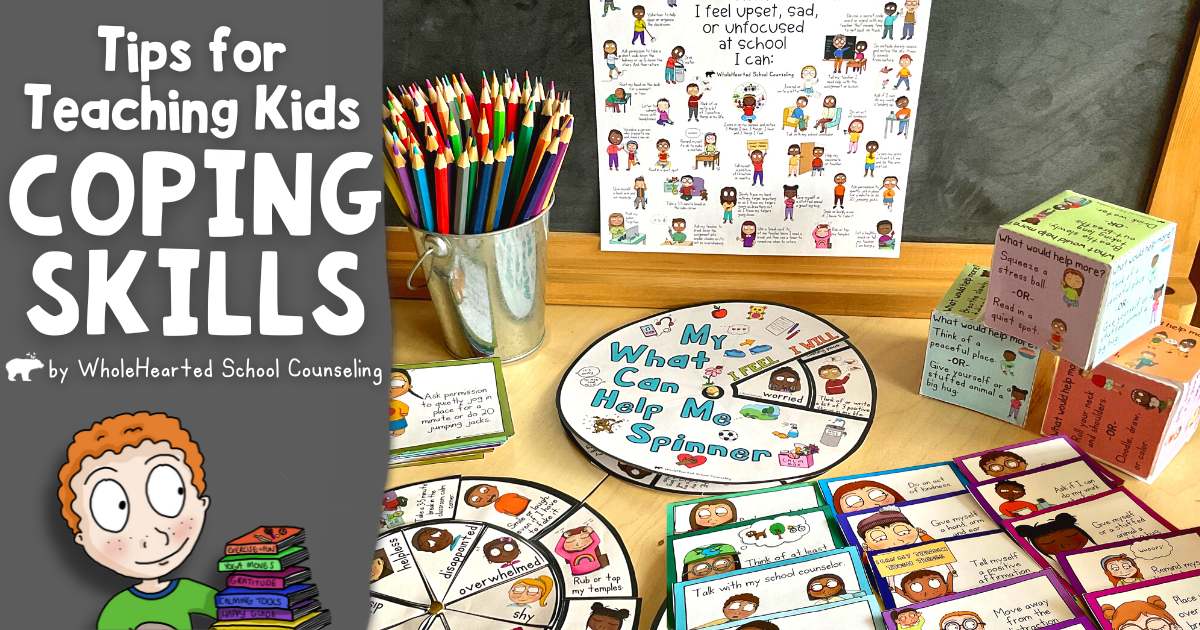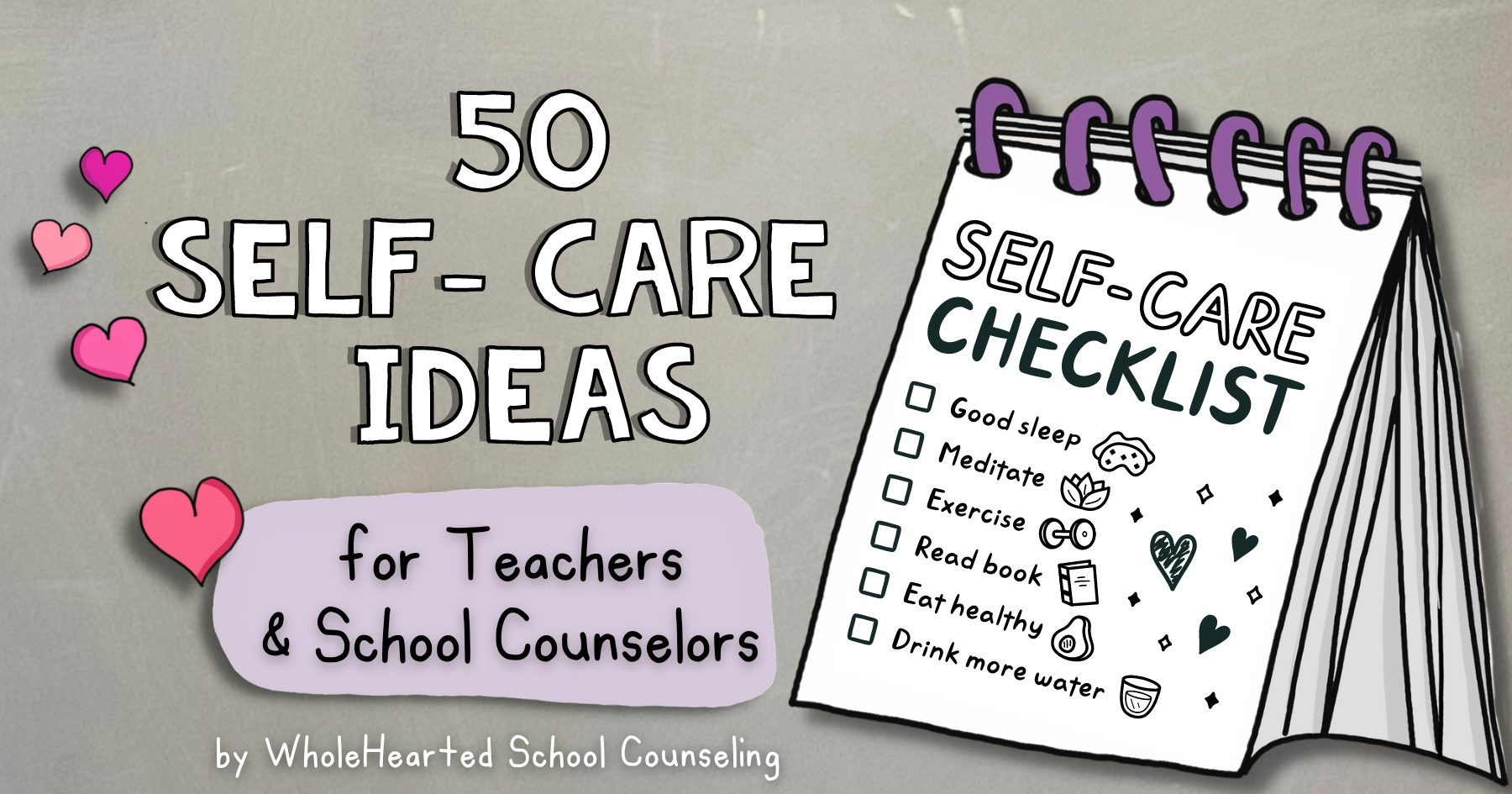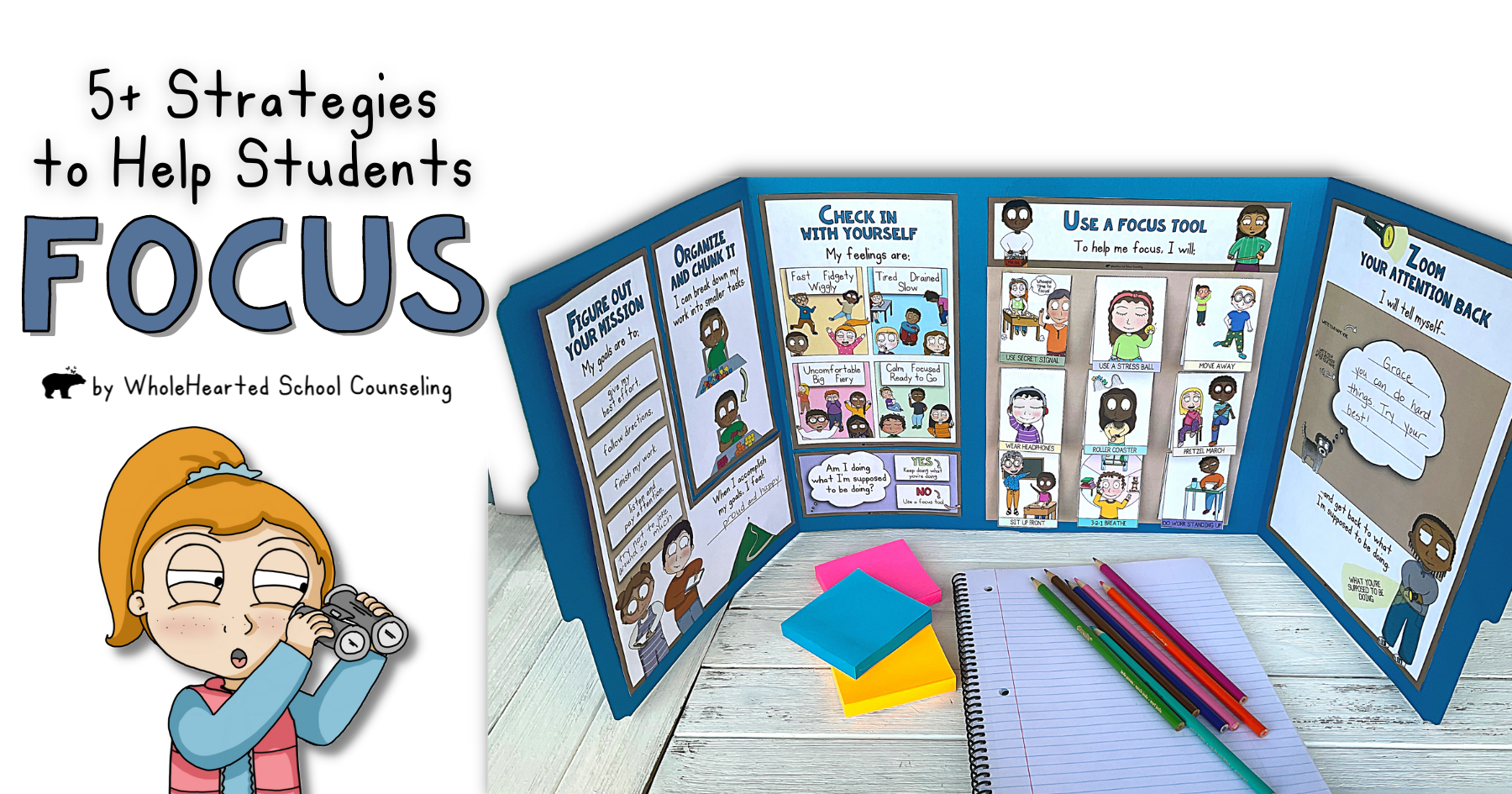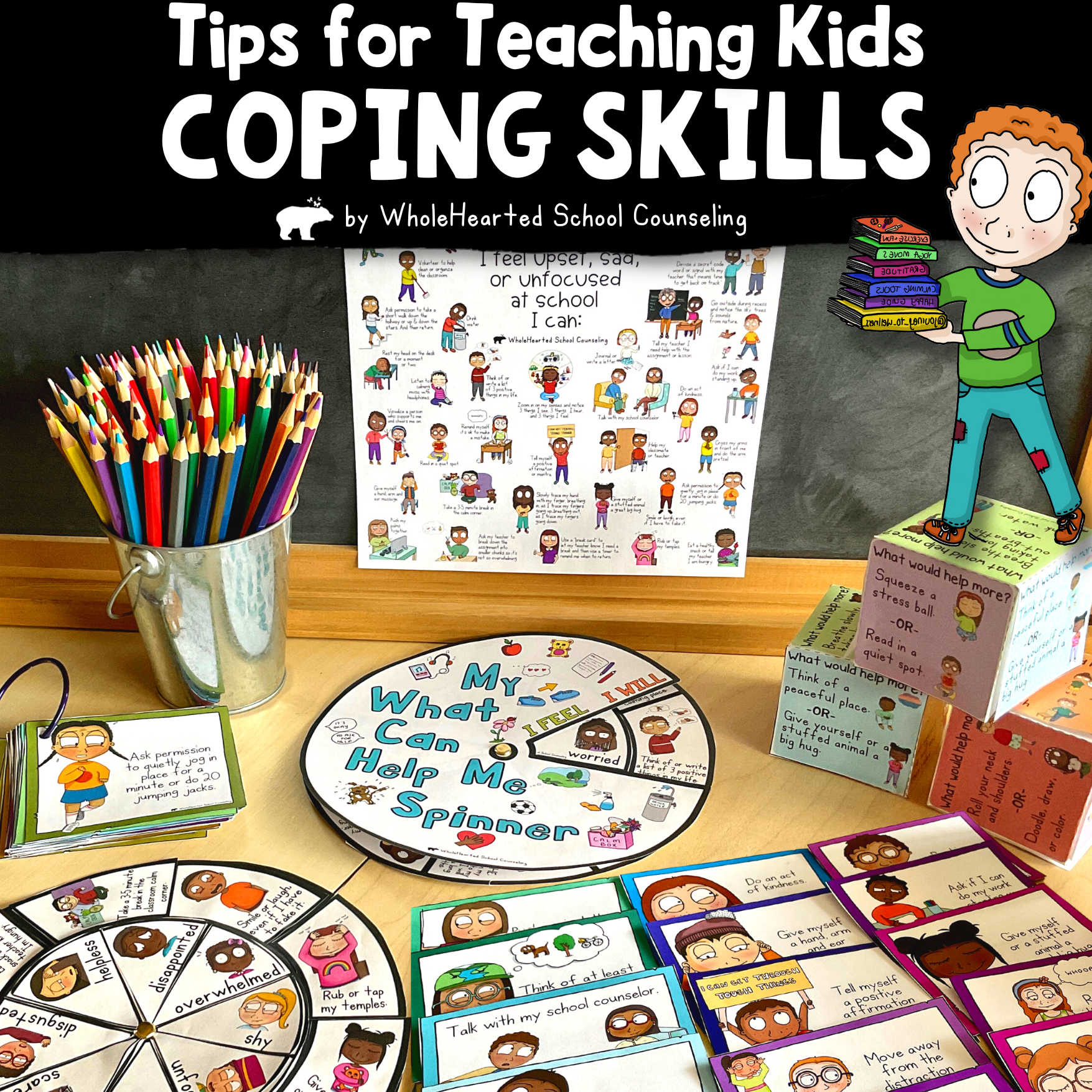
TEACHING KIDS EMOTIONAL REGULATION SKILLS
If you’ve stumbled onto my blog by accident or on purpose, I’m super glad you’re here! That’s because this post is about one of my favorite topics: the whys and hows to teach kids coping skills.
Self-regulation coping strategies can be the difference between a bad moment and a bad week. Whether you are a parent, teacher, school counselor, mentor, or coach, utilizing healthy coping tools is one of the pillars of living an empowered life (and means to cultivate meaningful connections). There’s no escaping big emotions. Which is why it’s so important for kids (and adults) to learn about and practice relating to uncomfortable emotions in thoughtful and kind ways.
The number one place where children learn these essential skills is at home. There are no better teachers for coping skills than moms, dads, grandmas, and grandpas.
The second most likely place kids might learn about calming strategies is at school. Historically in schools, the main person designated to teach students about emotional regulation have been the school counselors. And although this continues to be one of the basic skills school counselors focus on, more and more classroom teachers find themselves stepping in to help their students deal with big emotions, too.
First, let’s go over why we even need coping tools. And then talk about how to teach kids the skills for emotional regulation.
The Stress Response and Kids
Life does not always go according to plan. It’s a given that it can be really hard sometimes. You may wake up and have to pivot because your car battery decided to breathe its last life when you jump in the driver’s seat for a 7am appointment. Or perhaps you found out your spouse is being transferred out of state for his or her job.
And for our kids, uncomfortable and sometimes overwhelming emotions can be spurred by seemingly small events. For instance like being rushed to get shoes on and out the door to being the target of an eye roll from a classmate.
Similarly, the stress response is easily triggered by bigger situations, such as divorce, parents dealing with their own stress from financial problems, or the death of a loved one.
Fight-Flight-Freeze
When a child is dealing with tough things, there’s a good chance that he or she is going to experience a stress response. When this happens, the protective part of the brain, called the amygdala, works overtime. Its job is to look out for anything that might harm its person.
When the amygdala detects a threat, it sounds an alarm and gets the body ready to go into the fight-flight-freeze response. This “alarm” is often experienced as a big and/or uncomfortable emotion.
And as you probably have experienced many times in your life, when we experience big emotions, it’s pretty difficult to tap into the thoughtful part of brain. You know, that part of brain that helps us to make good decisions, including taking actions that we don’t regret later.
When we don’t understand our body’s stress response or lack helpful coping tools to handle the stress, it’s pretty easy to blow up and/or even do things we later regret. Anger management, conflict resolution, and/or completing tasks can become even more tricky to handle.
At school, a child who often expresses emotional dysregulation, unfortunately might get somehow labeled as being defiant, oppositional, or difficult. Which then, of course, can turn into a vicious cycle making that student’s school experience even more challenging.
How Coping Tools Can Help
But, what if when kids were dealing with something challenging, they had a back pocket full of healthy coping tools to manage stress and other uncomfortable feelings that they could pull from? What if they understood what was happening when their heart raced, their palms felt sweaty, and their muscles tensed? What if they could actually relate to these feelings with self-compassion and understanding?
Coping tools are used to support all of the external and internal emotional responses of feelings such as stress, anxiety, anger, shame, embarrassment, or overwhelm. Hence the reason for placing an intentional focus on teaching self-regulation coping strategies at home and at school.
1. Use Coping Tools Yourself
One of the best ways to teach kids coping skills is to use them them yourself. When modeling coping tools to your child, you can even think out loud in front of him or her. Talk through your step by steps for remaining calm in a challenging situation.
For example, you may find yourself becoming agitated after having to repeat your directions several (hundred) times. Pause and say, “I feel my body starting to become tense because I’m having to repeat my directions. Instead of raising my voice, I am going to take three big breaths and try again.”
Using healthy coping skills yourself also cultivates co-regulation.
Co-regulation cultivates attunement with your child (or student). When a child is experiencing a stress response, rather than responding to her or him in an anxious, frustrated or detached way, try to respond in a supportive, empathetic, calm, and “you are safe right here and right now” sort of way. Co-regulation literally influences (or trains) your child’s nervous system to reduce heightened arousal sensations. In addition, over time co-regulation teaches your child to self-soothe.
2. Teach Kids to Identify Their Feelings
It’s far more difficult to regulate an emotion if you don’t know what to call it or understand what is causing it. When children are very young, start by introducing basic feeling vocabulary, such as mad, sad, happy, and worried. As children get older, incorporate more nuanced emotions, such as loneliness, shame, anxiety, hope, and embarrassment. Since kids are such concrete thinkers, it helps to show them visual supports of feeling faces and body language to better teach them different feelings.
As one of my favorite child development and brain researchers Dr. Dan Siegel, says, you’ve got to “name it to tame it.” One of the coolest things about identifying feelings is that the actual naming of feelings is a coping tool in and of itself. In other words, it is not a first step toward emotional regulation…..it IS an emotional regulation strategy.
One of the best ways to teach kids how to recognize, label, and identify their feelings is to talk about the feeling clues and sensations that your body experiences when feeling particular emotions. If you are going to teach kids coping skills, children need to recognize feeling sensations and clues so that that they can better take care of those feelings.
I love using this feeling sensation chart below to help kids recognize different feeling clues, since it provides strong visual supports, which is essential for making feeling identification more concrete. It’s also great to use when a child might be dealing with a stress response, at it helps to get them present and pause anxious thoughts.
I think one of the most fun ways to help children build their feeling vocabulary is through games. I made these feeling playing cards to play more familiar games like Memory, Go Fish and War. Plus, when kids are having fun by doing things like playing games, you not only get greater buy-in and engagement, kids will also better retain what they are learning!
You can also incorporate a daily feelings check in (like this one) into your routine.
If you’re a teacher or school counselor and are using a check-in like this one, it gives students the opportunity to report verbally or nonverbally how they are feeling, and to ask for help if needed. This also supports building relationships with your students and helps to create a safe classroom climate. You can use this in the morning when students arrive at school or anytime throughout the day. Transitions are especially a good time to check back in and assess the temperature in the room.
I also made these (FREE!!) Feeling Scales that you can use with your children or students, too! (Punch two holes, insert a pipe cleaner with a bead, and not only do you have an instant feelings thermometer, you’ve also got a fun, tactile tool, too!
3. Teach Kids That All Emotions Are Ok!
Another important factor involved with teaching kids coping skills is to encourage or even cheer them on to accept ALL of their feelings, even the ones that don’t feel good. The first way to do this is to emphasize that feelings are like visitors that stop by to share information about what we like, don’t like, and/or what we may want or need. This is (especially) true for even the most uncomfortable feelings.
It’s important to let kids know that sometimes feelings are so uncomfortable that you might try to ignore them by playing video games, watching T.V., acting tough, or doing other things that help you to zone out. (These are unhelpful coping skills!). Unfortunately, those ignored feelings usually don’t go away just because you want them to leave. Instead, they often become bigger and stronger and can even prevent you from feeling other feelings.
Then I like to share the following analogy about doors: when you try to shut out one feeling, it’s like closing a door that will eventually KEEP OUT all the other feelings (including the ones you may actually want to feel). So, rather than ignoring your feelings, try to welcome and accept them instead.
Welcoming and accepting your feelings means to just notice them. Name them. Say “hi” to them. Think about what might have happened for those feelings to visit you. And then pay attention to what your feelings are trying to teach you, too.
Since all things feelings can seem pretty abstract to children, I designed the Feelings Comic Book for Kids (filled with tons of fun visual supports) to better teach some of these concepts, such how to accept your feelings.
4. Teaching Kids Coping Tools: Be Concrete and Specific
The concept “coping tools” might seem pretty abstract to some kids. One way to talk about it is to share that coping tools are things we can do to help us take care of our feelings. They are “tools” we can use deal with and get through uncomfortable feelings.
You might also want to mention that there are a lot of different ways that people deal with difficult emotions. And that some ways are more helpful than others. Underscore that even though all of your feelings are okay, it doesn’t mean it’s helpful to act or behave in any which way.
coping tool Checklists!
When I was still in the schools, one of my favorite activities to do with kids was to give them a checklist of helpful coping tools, and have them check off everything they have tried that has been helpful, or would like to try.
What becomes clear is that most kids already have lots of healthy ways to deal with tough things!
The trick then, is to continue practicing those helpful coping tools, so that the next time you can use those skills, it’s more easy and natural to actually utilize them.
SEL LESSONS
Are you a school counselor, classroom teacher, or even homeschooling mom or dad? Teach kiddos coping skills via direct lessons, books, and/or social narratives, like the one you can find in my Kids Coping Skills! – 50 Coping Tools for Kids resource.
Or divide up the class into teams to learn and practice different coping tools with a Jeopardy-like Quiz Show, like this one!
Your students might also like the The Brain and The Stress Response Lesson, especially if they love cute animal characters! This SEL lesson teaches kids about the stress response, everyone’s amazing, hardworking brains, and effective coping strategies for kids (and adults, too)!




